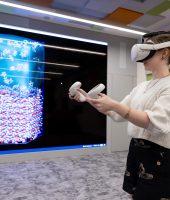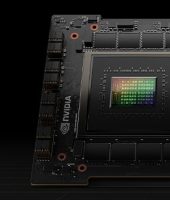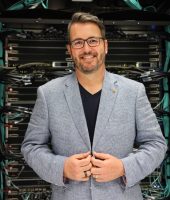 Staff from Pawsey and the National Computational Infrastructure (NCI) recently attended SC17-the Supercomputing conference in Denver, the largest and more prestigious international conference for High Performance Computing (HPC). SC attracts scientists and engineers, software developers, policymakers, corporate managers, CIOs, and HPC administrators from universities, industry, and government agencies. SC has grown to become truly an international conference, attracting 12,000 attendees from around the world.
Staff from Pawsey and the National Computational Infrastructure (NCI) recently attended SC17-the Supercomputing conference in Denver, the largest and more prestigious international conference for High Performance Computing (HPC). SC attracts scientists and engineers, software developers, policymakers, corporate managers, CIOs, and HPC administrators from universities, industry, and government agencies. SC has grown to become truly an international conference, attracting 12,000 attendees from around the world.
The exhibition floor at SC featured more than 350 exhibitors from industry and research communities, with at least 117 countries represented. Australian HPC was represented by a joint booth from NCI and the Pawsey Supercomputing Centre.
During the exhibition, Pawsey and NCI staff talked to at least 270 people who, after adopting a Pawsey kangaroo, stayed to find out more regarding the science outcomes that the two peak facilities are enabling for Australian researchers. At the booth, a series of presentations, called Kookaburra talks, were hosted by staff from both facilities. Held around lunchtime, the sessions covered topics such as PBS Pro Integration at NCI; Real Time Monitoring of HPC Systems using Elastic Stack; Spectrum Scale File System (GPFS) with Spark and Conductor; Advanced Technology Cluster hardware, projects and performance results; and more.

This year the conference’s keynote speaker was Professor Philip Diamond, Director General of the international Square Kilometer Array (SKA) project. Professor Diamond, accompanied by Dr. Rosie Bolton, SKA Regional Centre Project Scientist, took SC17 attendees around the globe and out into the deepest reaches of the observable universe as they described the SKA’s international partnership. Pawsey’s connection with the SKA drove space enthusiast to our booth, wanting to understand more about how Pawsey is contributing to one of the most ambitious science enterprises of our times.

Supercomputing events are always an opportunity to strengthen relations with other Centres around the world, and SC17 was no exception. The Pawsey Supercomputing Centre developed an international best practices newsletter that saw the collaboration of the Partnership for Advanced Computing in Europe (PRACE), The National Energy Research Scientific Computing Center (NERSC), Texas Advanced Computing Center (TACC) alongside the Pawsey Supercomputing Centre. This first issue was focused on training and Outreach best practices. The newsletter was sent out the week before of the event and reached more than 400 people from research and Supercomputing centres around the globe. SC attendees were keen to find out more about how their facilities can contribute to the newsletter that is scheduled to be sent before the two main international supercomputing events.
NCI also participated in a panel on Diversity in Supercomputing, led by PRACE and Women in HPC. The aim of the panel was to gain international perspectives on ways to improve diversity in the HPC space around the world.
The Top500 list of global supercomputers was announced at the beginning of the show. NCI’s Raijin supercomputer is still in the Top100, as the 76th fastest supercomputer in the world and the fastest in Australia. Pawsey’s Magnus system was ranked 141, falling 100 places since its debut in 2014. Two more public systems from Australia were showcased on the list, AVOCA from VLSCI and OzSTAR from Swinburne University ranked 373 and 444 respectively.
The planning for ISC18 has started, and NCI and Pawsey will once more be sharing their experiences with the international HPC community in Frankfurt next June with a joint booth.


